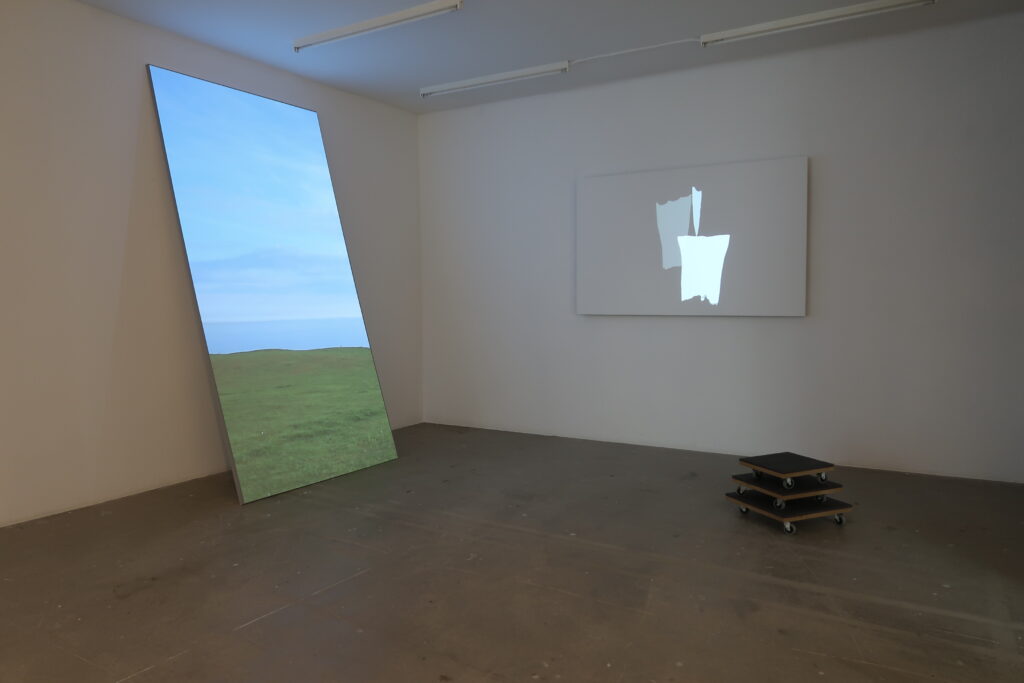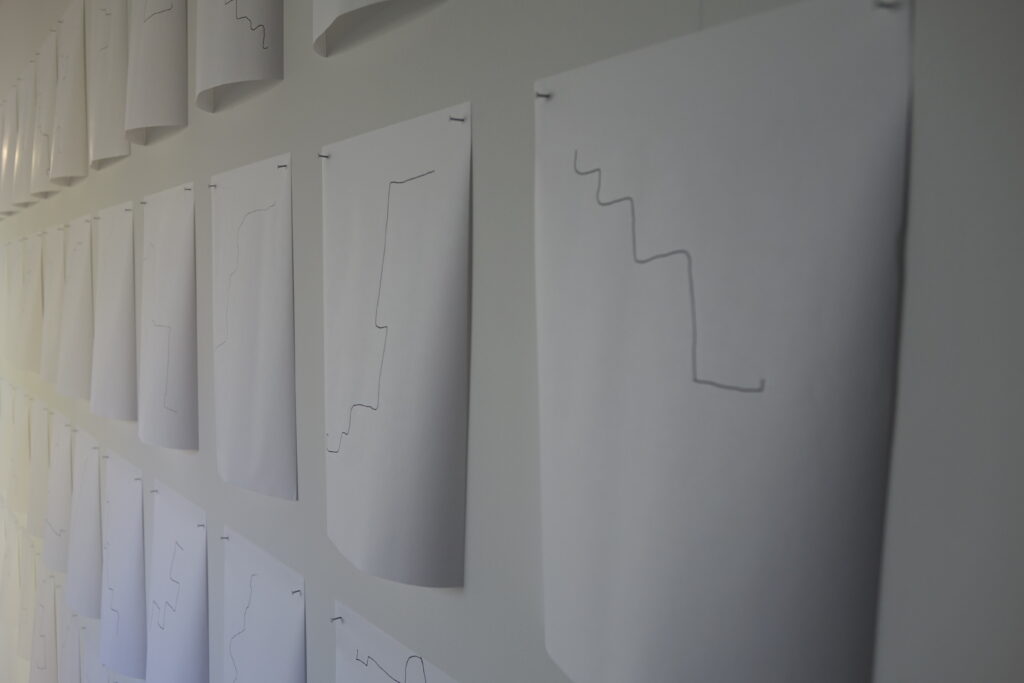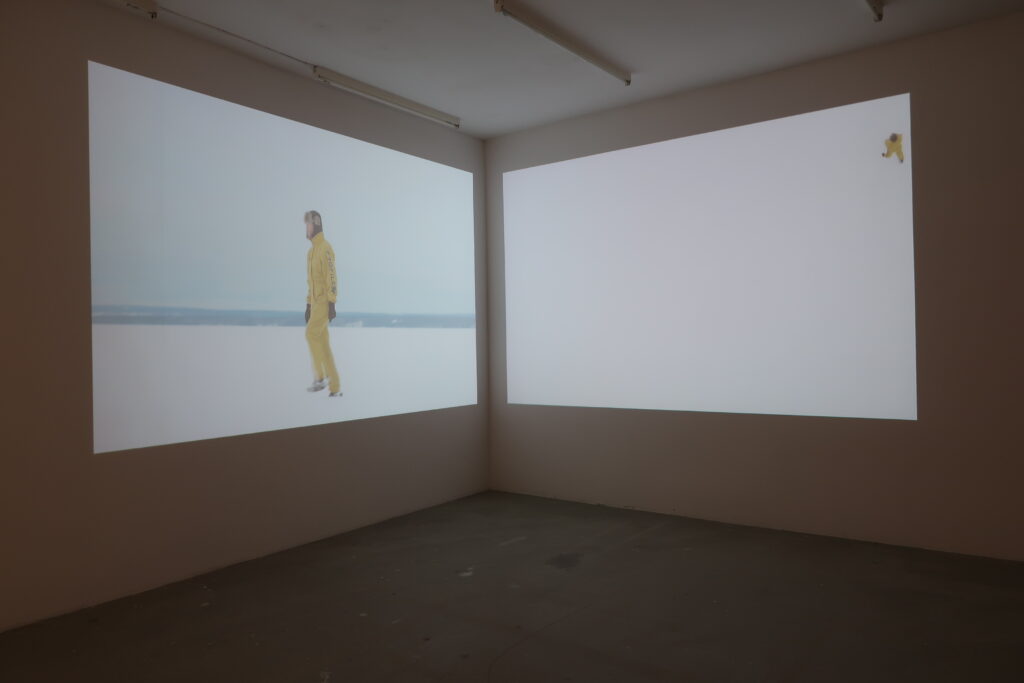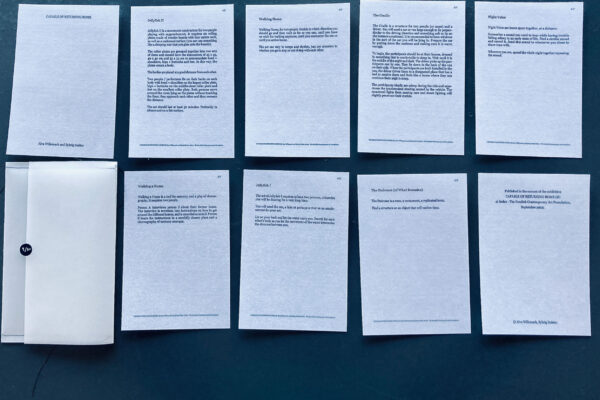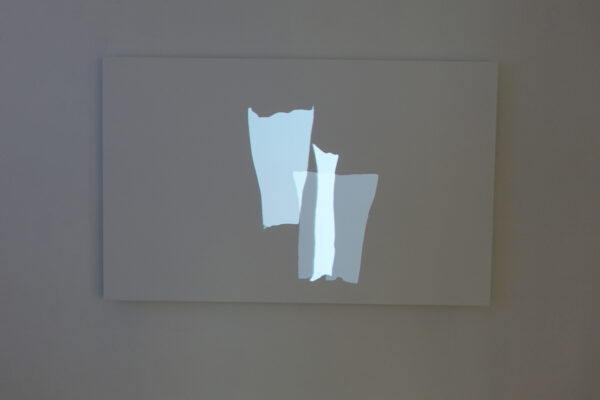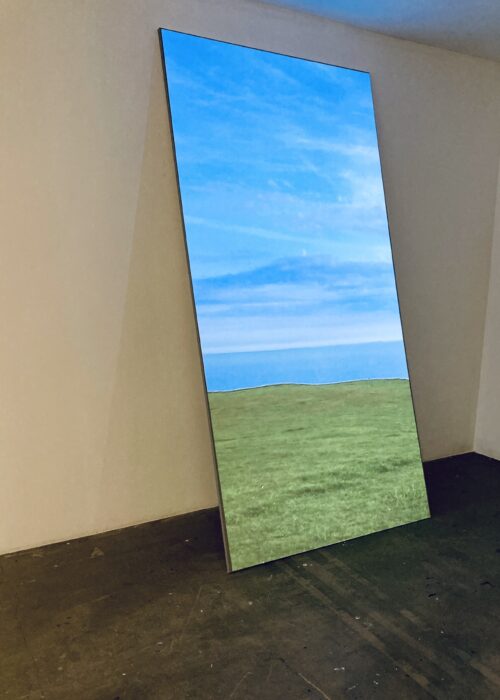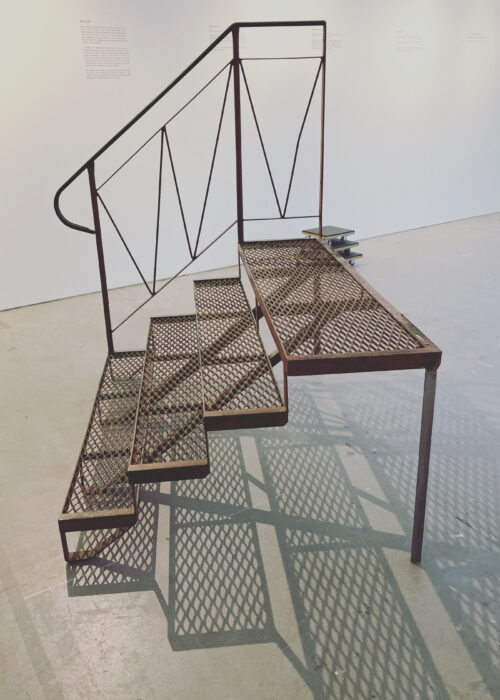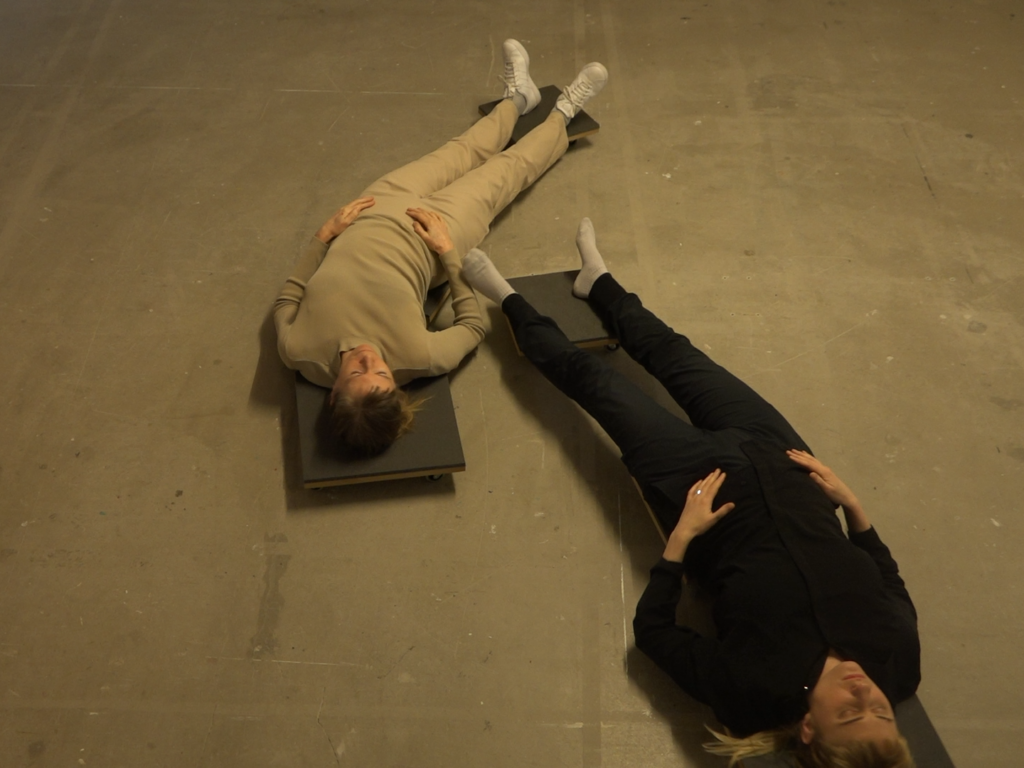Capable of returning home
To walk, to go somewhere, to move to another time, discerning and filling the gaps between bodies in movement with traces of memories. Artist Alva Willemark and choreographer Sybrig Dokter work together around several questions related to places and displacement, objects and images, and to memories contained within our bodies.
The exhibition CAPABLE OF RETURNING HOME is a shared dialogue across an extensive temporality with two voices reflecting on many moments. In January 2022, Willemark and Dokter presented a two-week exhibition under the same title at Index and utilized the exhibitional space almost as a domestic situation for testing scores and performances. Now, after a half year, Willemark and Dokter return to Index with a series of works expressing the meaning of home through memories — memories that create new pathways and new places which transforms the exhibition space into a wandering home for travelers who are welcome to join in the journey. As the duo states, “we are to keep visiting ‘places’ we have left with our bodies, to be able to walk into new ones.”
Memory can be understood as a parallel world that defines its own reality. Our own memory can be triggered by objects summoning forgotten places from the depths of our subconscious and raising multiple questions: how was our home when we were kids? What kind of feelings are related to specific spaces within it? Was it warm or cold? Was it scary? Was it a place for love? Through these questions, the temporal distances shorten as memories of the spaces emerge.
At Index, the visitor will experience a spatial installation in various phases combining film, texts and objects encouraging movement of bodies and the senses. At the entrance, visitors are greeted with a passage leading toward a horizon that opens up to various reference points. In the middle of the exhibition at Index, a metal staircase is displayed. It is the last physical remnant of a demolished house in the North of Sweden, once the home of Willemark’s grandfather. This single object opens a series of connections to memories for Willemark. Now presented as a sculpture, the staircase becomes a possible path toward rebuilding a house in the mind. The object itself is something to be observed with its many layers of meaning and possible stories. Memories of other homes are present in the exhibition and their traces emerge in a double projection where we follow Dokter moving through a field covered in snow.
In this empty, monochrome space devoid of boundaries, Dokter is carrying out a score scripted by Willemark in response to uncovering Dokter’s memories of the inward architecture of her many childhood homes. As the choreography progresses, walls, stairs, feelings and distances begin to appear from automatic yet forgotten movements. Performative scores are an important element of Willemark’s and Dokter’s practice and these exercises are visible within the space; some scores from the first phase of their exhibition in January are presented again. The scores offer a way for visitors to participate through movement and add their own memories to the thoughts and questions proposed by Alva Willemark and Sybrig Dokter.
text by Indexfoundation
Jellyfish I
The act of Jellyfish I requires at least two persons,
otherwise you will be floating for a very long time.
You will need the sea, a lake or perhaps a river as an emplacement for your act.
Lie on your back and let the water carry you. Search for each other’s body as you let the movement of the water determine the distance between you.
Alva Willemark and Sybrig Dokter 2022
Jellyfish II
Jellyfish II is a movement construction for two people playing with rapprochement. It requires six rolling plates made of wooden boards with four casters each, as well as a cushioned surface (you can use something like a sleeping mat that you glue onto the boards).
The roller plates are grouped together into two sets of three and should have the dimensions of 45 x 45, 40 x 40 cm and 35 x 35 cm to accommodate head + shoulders, hips + buttocks and feet. In this way, the plates create a body.
The bodies are placed at a good distance from each other.
Two people / performers lie on their backs on each body with head + shoulders on the largest roller plate, hips + buttocks on the middle-sized roller plate and feet on the smallest roller plate. Both persons move around the room lying on the plates without touching the floor; they approach each other and then recreate the distance.
The act should last at least 30 minutes. Preferably in silence and on a flat surface.
Alva Willemark and Sybrig Dokter 2022

